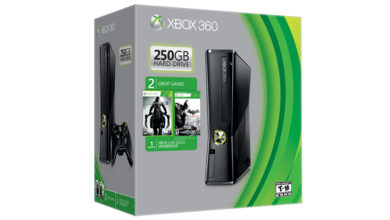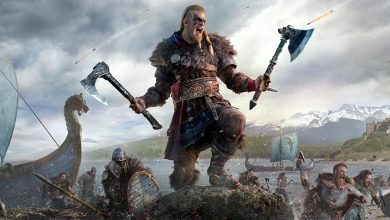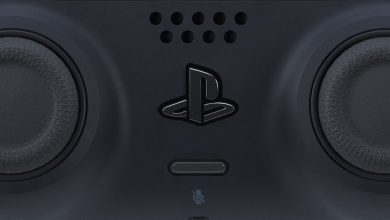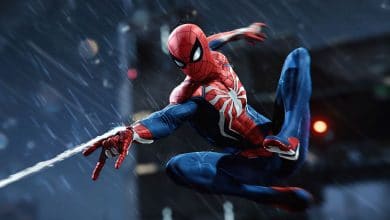The Top Spin franchise has been around for close to ten years, and Virtua Tennis close to fifteen. So it’s surprising that it took until 2009 for EA Sports – a major force in the sports games genre, to release its first game based on one of the most popular and glamorous sports in the world. While the publisher has been wildly successful with some of its sports franchises (FIFA, Madden NFL), it’s also had to eat humble pie in others (NBA, MMA). In the lead up to its release, Grand Slam Tennis 2 (GST2) looked like it could go either way.
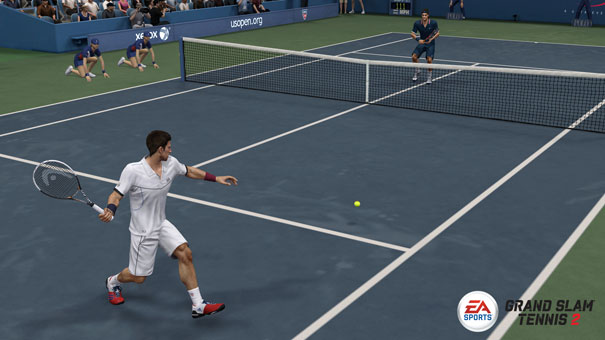
The second game ditches the cartoony visuals and simplistic controls of its Wii-based predecessor for a more mature visual styling and gameplay that’s more in line with 2K and Sega’s offerings. You’d expect EA Sports to ace it in the presentation department, and it does. Character models look spot-on, the venues look great, and animations and cutscenes are well done. You’d also expect the game to cram in every official license there is, but while it doesn’t have the ATP or WTA seal of approval, it is the only tennis game to feature official licenses for all four grand slams. It’s also got a strong roster that includes pretty much all the top male and female stars from the current crop, plus a number of former greats like Sampras, Becker and Navratilova. Agassi and Graf are noticeably absent though.
This is also the first tennis game to include commentary, and that too from legends Pat Cash and John McEnroe. However, the quality is closer to the lazy Richie Benaud monologues of Cricket 97 than the play by play banter of the Martin Tyler-Alan Smith pairing in FIFA 12. Only occasionally will you hear the commentators remark on the on-court events, and even when they do, there’s a severe lack of excitement, even with McEnroe on the mic. The rest of the commentary consists of uninteresting educational speeches on the various types of strokeplay, which often carry on over two or three points, oblivious to the goings-on in the match at hand. That said, some commentary is better than nothing, but I’d definitely like to see things improve if there is to be a third game.
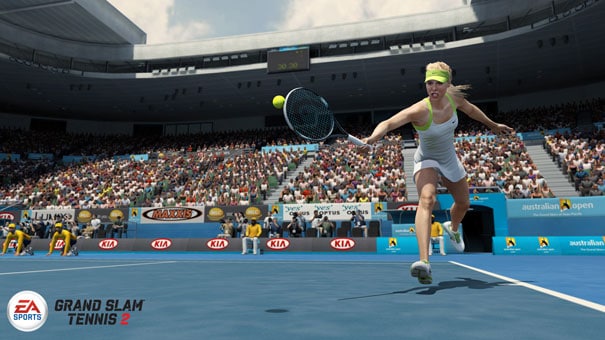
So EA has bested the competition in the presentation department, but it falls on its face flatter than a Rafa down-the-line winner when it comes to gameplay, with the regular controller at least (it’s a whole different ball game with Move, which I’ll get to in a bit). GST2 tries to find middle ground between Virtua Tennis’s arcade antics and Top Spins’s more serious approach, but it doesn’t quite achieve that too well. For starters, it almost seems to decide at random when a shot falls inside the court and when it lands wide. At times, overpowered and severely mistimed shots seem to fall in, while at other times, a well-timed shot (particularly in the case of volleys) randomly falls outside. The pacing is just right and the timing-based serve mechanic works well, but I couldn’t shake the feeling that I just didn’t have enough control over the power and direction of my shots.
Aside from the standard control scheme that utilises the face buttons for the various shot types and triggers for drop and lob modifiers, GST2 also features the Fight Night-inspired Total Racquet system that maps shots to the right analog stick. Of the two, I preferred the traditional layout, but both pale in comparison to the experience afforded by Playstation Move. Simply put, this is the biggest and probably the only reason to pick GST2 over its competitors. You could use the navigation controller for movement, but its most fun with a single Move controller (movement AI controlled). Move is accurate and precise, with a turn of the wrist allowing you to pull off top spins and slices. It’s also easier to pick between cross-court and down-the-line shots because with Move, it’s simply a case of timing; meeting the ball early results in a cross-court shot, but hang back a bit to go down the line. Playing with Move feels instinctive, but serving did throw up some issues as the camera didn’t always pick up the service action accurately, resulting in faults. All said and done, GST2 implements Move better than either Virtua Tennis 4 or Top Spin 4. Sadly, there’s no Kinect support.
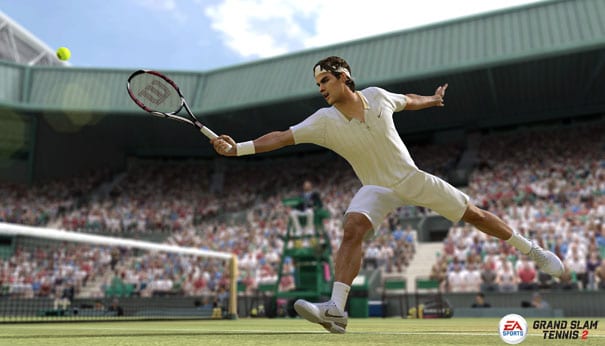
In terms of game modes, GST2 is pretty barebones. The ten-year career mode sounds impressive, but in essence, it’s just a case of playing through the four grand slams each year with your created player, with each one interspersed with training exercises, head-to-head exhibitions, and smaller tournaments, all with the purpose of moving up the rankings to #1. There are no fun training mini games here, and you can’t choose which stats your XP is used towards improving, which is bit disappointing. So a forgettable career mode then, and outside that and exhibitions, the only interesting offline mode is ESPN Classics. It recreates some of the memorable real-world encounters from over the years, complete with intros from Pat Cash and post-processing effects for that retro look.
Online is one area where both Virtua Tennis 4 and Top Spin 4 have suffered, but GST2 fares far better, capitalising on EA Sports’ stellar online pedigree. Exhibition matches are easy to find and connect to, and lag is either non-existent or minimal, and everything you do in the game contributes to your chosen country’s standing in the Battle of the Nations leaderboard.
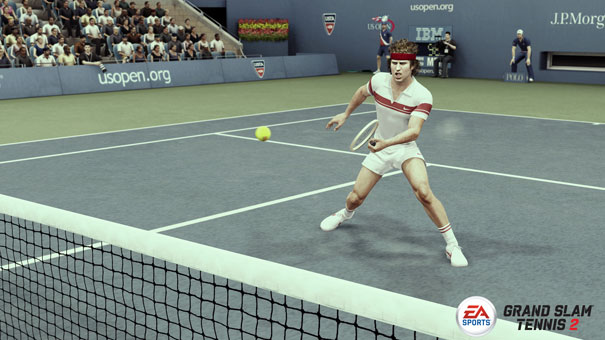
Conclusion
As far as tennis games with Playstation Move go, Grand Slam Tennis 2 is the best. I’d also be tempted to recommend it to those looking for fun online multiplayer, but what eventually lets it down is its insipid core gameplay. Winning a long rally or forcing your opponent into an error never feels rewarding, because there’s always this unsettling feeling that you don’t ever have total control over the outcome. Add to that an underwhelming career mode, and you’ll be best served to give this one a miss, especially now that the far superior Top Spin 4 retails for nearly half its price.

